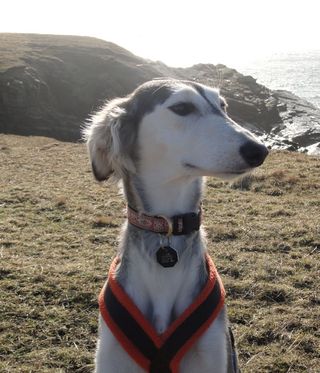Why Dogs' Origins Are Still Mysterious

Humans' close relationship to dogs has so far obscured their history so much that it's not yet possible to use genetic data to tease out the details of their domestication, new research indicates.
Their complicated history involves being interbred, as well as transported around the world.
"There's a central irony here which is that because we love them so much, we've completely obliterated their early history and made it more difficult to understand their origins," researcher Greger Larson, an evolutionary biologist at the University of Durham in the United Kingdom, told LiveScience in an email.
Dogs were the first domesticated animal; however, many major questions about their domestication remain. For instance, it's still not clear how many times they were domesticated, where in the Old World this happened, and how many different wolf populations contributed to the modern global population of dogs.
Using genetic data taken from modern breeds so far, it's not yet possible to look back more than about 150 years ago, past the time when Victorians began establishing the tightly defined breeds we know today, Larson said. [What Your Dog's Breed Says About You]
For the previous 15,000 years or so, the genetic history of dogs is a "big blurred mess," he said, explaining that while some selective breeding took place since dogs were defined by their jobs, dogs also breed on their own. In addition, humans transported them around the world and certain varieties even disappeared.
However, some breeds of modern dogs, including Akitas, Afghan hounds, Chinese Shar-Peis, Basenjis, and Salukis, appear to have deeper genetic roots. But the recent analysis indicates that even these "ancient dog breeds" don't trace back more than a couple thousand years and are no closer to the first domesticated dogs than are more modern breeds.
Sign up for the Live Science daily newsletter now
Get the world’s most fascinating discoveries delivered straight to your inbox.
The team analyzed genetic material from 1,375 dogs representing 35 breeds, including six of the "ancient" breeds.
They also mapped out the locations of these breeds in relation to archaeological evidence of ancient domesticated dogs, as well as the ranges of wolves. They found the majority of "ancient" breeds did not derive from regions where the oldest archaeological remainshave been found, and three of them came from ranges outside those of wolves, dogs' wild ancestor.
It follows that the only reason these "ancient" dogs appear different from other modern breeds is they somehow avoided the most recent round of hybridization in the mid-19th century, he said.
However, advanced genetic sequencing technology and techniques to analyze the shapes of fossils, as well as the anatomy of contemporary dogs, are opening up the possibility of answering some of the questions that haven't yet been possible to broach, he said.
The study was detailed online today (May 21) in the journal Proceedings of the National Academy of Sciences.
You can follow LiveScience senior writer Wynne Parry on Twitter @Wynne_Parry. Follow LiveScience for the latest in science news and discoveries on Twitter @livescience and on Facebook.
